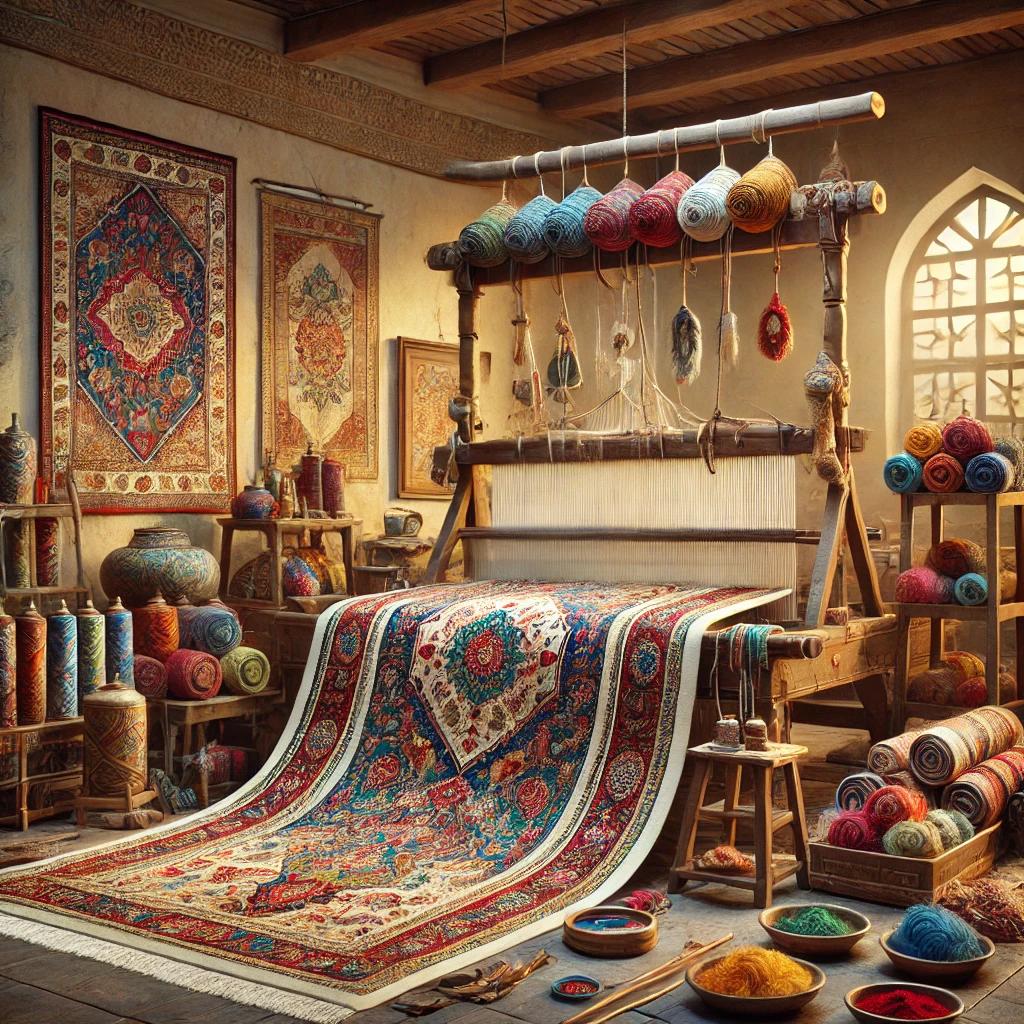
Persian Rug Cleaning: A Step-by-Step Guide to At-Home Care and Wool Rug Durability
Estimated reading time: 8 minutes
Key Takeaways
- Persian rugs are art pieces requiring specific care to maintain their beauty.
- Regular cleaning significantly extends the lifespan and vibrancy of your rug.
- Wool offers excellent durability, making it perfect for rugs in high-traffic areas.
- Using appropriate techniques is crucial to avoid damaging delicate fibers.
- Professional cleaning is recommended for deep set stains or fragile pieces.
Table of contents
- Understanding Persian Rugs
- Why Regular Cleaning is Essential
- Assessing Your Rug Before Cleaning
- Tools and Supplies Needed for At-Home Persian Rug Cleaning
- Step-by-Step Guide to Cleaning Persian Rugs at Home
- Persian Rug Cleaning: Before and After
- Maintaining Wool Rug Durability
- Additional Tips and Best Practices
- Conclusion
- FAQs
Persian rug cleaning is crucial for preserving the beauty and longevity of these exquisite pieces. As valuable additions to any home, Persian rugs require proper care to keep their colors vibrant and fibers strong. Regular cleaning not only enhances the aesthetic appeal but also protects your investment in these stunning textiles. This guide will cover the uniqueness of Persian rugs, the importance of regular cleaning, how to assess your rug’s condition, provide detailed at-home cleaning steps, and offer tips for maintaining the durability of wool rugs.
Understanding Persian Rugs
What Makes Persian Rugs Unique?
Persian rugs are not merely decorative; they are a testament to an intricate art form. Crafted in Iran, they are often hand-woven using the Persian knot technique. The result is a tapestry filled with rich colors and detailed patterns that convey cultural stories. Here’s what sets them apart:
- High-Quality Materials: Most Persian rugs are made from premium wool, which adds softness and durability.
- Artisan Craftsmanship: Each rug is often a unique creation, reflecting the personal expression of the weaver.
- Traditional Techniques: The Persian knot is a unique method of weaving that enhances texture and design intricacy. [Source]
Wool Rug Durability
Wool is renowned for its durability, making it an ideal material for rugs. Here’s why wool rugs are a wise investment:
- Resilience: Wool fibers are naturally tough and can withstand heavy foot traffic, making them suitable for almost any room.
- Ease of Cleaning: Wool is relatively easy to clean, but gentle handling is essential to prevent fiber damage and color fading. [Source] [Source] [Source]
The Need for Proper Cleaning
Due to their delicate craftsmanship and natural materials, Persian rugs require specific cleaning techniques to avoid lasting harm. Regular care is fundamental, as improper cleaning methods can permanently damage the fibers and patterns. Consistent attention will preserve the beauty of your rug over time. [Source] [Source]
Why Regular Cleaning is Essential
Benefits of Regular Cleaning
Regular Persian rug cleaning is vital for several reasons:
- Extends Lifespan: Keeping your rug clean significantly prolongs its life and maintains its appearance.
- Reduces Allergens: Regular cleaning minimizes dust, allergens, and pests from embedding in the fibers, contributing to a healthier indoor environment.
- Prevents Permanent Damage: Dirt that settles into the fibers can become ingrained, leading to irreversible damage over time. [Source] [Source]
Common Issues Caused by Neglect
Neglecting your Persian rug can lead to various issues, including:
- Dull Colors: Regular dirt accumulation dulls the vibrancy of the rug.
- Fiber Breakdown: Without cleaning, fibers may break down leading to a reduction in the rug’s overall quality.
- Stains and Odors: Accumulated spills and pet accidents can create unpleasant odors and permanent stains. [Source]
Assessing Your Rug Before Cleaning
Evaluating Your Rug’s Condition
Before diving into the cleaning process, it’s crucial to assess your rug’s condition. Here’s how:
- Inspect for Worn Areas: Look for any worn or thin areas that might be more susceptible to damage.
- Check for Loose Threads: Loose threads could lead to unraveling if not addressed beforehand.
- Test Colorfastness: Ensure dye stability by checking a small hidden area for color bleeding when wet. [Source] [Source] [Source]
- Identify Deep Dirt or Stains: If you notice deep-set dirt, pet stains, or damage, consider professional cleaning.
Persian Rug Cleaning Before and After
Understanding the potential outcomes of proper cleaning can help set your expectations. Effective cleaning can revitalize worn colors, enhance the texture, and manage restoration efforts aimed at improving the rug’s overall appearance.
Tools and Supplies Needed for At-Home Persian Rug Cleaning
Essential Cleaning Tools
Having the right tools and supplies at your disposal is essential for safe and efficient cleaning:
- Vacuum Cleaner: A vacuum with adjustable settings suitable for delicate fabrics is essential.
- Soft-Bristle Brush: Ideal for loosening dirt without harming the fibers.
- Cloths: White cotton or microfiber cloths/towels are best for cleaning without leaving lint.
- Large Flat Surface: A spacious area is necessary for drying the rug after cleaning.
Eco-Friendly Cleaning Supplies
Opt for eco-friendly products to ensure your rug remains undamaged:
- Mild Dish Soap or Wool-Safe Detergent: Choose low-residue options for cleaning – [Source] [Source] [Source]
- White Vinegar: Effective for natural stain removal.
- Avoid Harsh Chemicals: Shun bleach or high-alkaline cleaners, as they can harm wool fibers significantly. [Source]
Step-by-Step Guide to Cleaning Persian Rugs at Home
Preparation
- Begin by Vacuuming: Always vacuum both sides of the rug gently, ensuring you do not disturb the fringe. [Source] [Source] [Source]
Surface Cleaning Steps
- Mix Detergent: Combine mild detergent with lukewarm water in a bucket.
- Clean with Care: Using a sponge or cloth, gently clean in the direction of the pile. Tackle small sections at a time. [Source] [Source]
- Rinse Often: Rinse your sponge or cloth frequently to prevent dirt from spreading.
- Spot Clean Stains: For any visible stains, apply diluted vinegar or an enzymatic cleaner as needed. [Source] [Source]
- Avoid Over-Wetting: Excessive wetting can damage the fibers. Avoid steam cleaners as they can also harm wool or silk rugs. [Source]
Drying Process
- Blot Excess Moisture: Use a dry cloth to blot as much moisture as possible.
- Air Dry Flat: Lay the rug flat to dry, avoiding direct sunlight or high heat, which can warp or fade colors. [Source] [Source]
Cleaning Area Rugs
For larger designs, implement a systematic grid pattern for cleaning to ensure even results across all sections. [Source]
Handle Fringes Delicately
If your Persian rug has fringes, consider leaving their care to professionals, particularly if it is hand-knotted, to avoid damage. [Source] [Source]
Persian Rug Cleaning: Before and After
Expected Transformations
After a proper cleaning, you can anticipate noticeable improvements:
- Brighter Colors: The hues will appear more vibrant.
- Revived Texture: The pile will regain a lush look and feel.
- Fewer Odors: Unpleasant smells will be significantly diminished.
Visual Examples
While visuals can enhance understanding, even without them, many experience similar transformative results—*Before: dull reds and mashed pile. After: restored vibrant colors and refreshed texture*. [Source]
Maintaining Wool Rug Durability
Best Practices for Long-Term Care
Adopting a few best practices can significantly enhance the durability of your wool rug:
- Rotate Regularly: Every season, rotate your rugs to ensure even wear.
- Use Rug Pads: Quality pads help minimize stress on fibers and prevent slipping.
- Blot, Don’t Rub: For spills, blot immediately instead of rubbing, which can push stains deeper. [Source] [Source]
Common Pitfalls to Avoid
Certain practices can harm your rug’s integrity:
- Avoid Sun Exposure: Direct sunlight can fade colors quickly.
- Limit Heavy Furniture Placement: Heavy items can crush fibers and create lasting impressions.
- Beware of Moisture: Excessive moisture can lead to mold and damage. [Source]
Additional Tips and Best Practices
Maintenance Routines
To maintain your Persian rug, consider establishing regular routines:
- Vacuum Weekly: Regular vacuuming helps eliminate dirt and allergens, ensuring your rug remains fresh. [Source]
- Schedule Deep Cleanings: Aim for deep cleaning annually or semiannually.
Storage Guidelines
Proper storage is critical:
- Store Clean Rugs Rolled: Always store your Persian rugs rolled, not folded, in a dry, pest-free environment.
Stain Prevention Measures
Implementing preventative measures can save significant work down the line:
- Utilize Entry Mats: This prevents dirt from entering your home and accumulating on your rugs.
- Encourage Shoes-off Policies: This simple approach can dramatically reduce wear and soiling.
Seasonal Care
Regular seasonal checks are essential:
- Air Out Periodically: Allow rugs to breathe and inspect for pests.
- Professional Cleaning: Schedule this as required, especially for stubborn stains or deep dirt. [Source]
Conclusion
Persian rug cleaning is not just about aesthetics; it is essential for maintaining the structural integrity and beauty of these distinctive pieces. By adopting and implementing the steps outlined in this guide, you can ensure your rug remains vibrant and durable for years to come.
If you have any doubts about cleaning techniques or if extensive stains arise, do not hesitate to consult a certified professional.
FAQs
- How often should I clean a Persian rug? Aim for regular vacuuming and professional cleaning as needed.
- Is steam cleaning safe for wool rugs? Steam cleaning can cause damage, so it’s best to avoid it.
- What is the best way to store a Persian rug? Store it rolled in a dry place, free from pests.
This detailed guide aims to provide you with the essential knowledge to care for your Persian rug effectively, ensuring its beauty and durability for generations to come. By following these steps and understanding the significance of proper care, you are well on your way to preserving your rug’s artistic charm.


